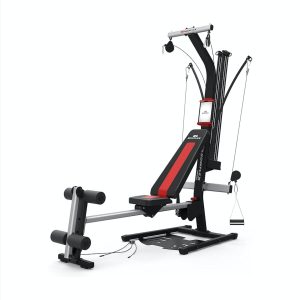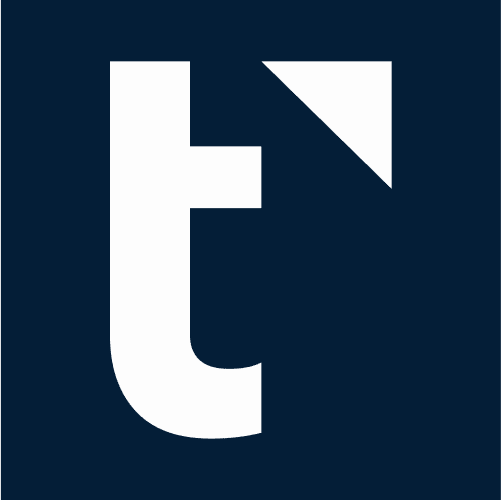Managing money can feel overwhelming, but having the right budgeting tool can make a big difference.
Bowflex circa 2001
At the tender age of 20 I was working full time, going to school full time, and playing house full time with my boyfriend. We had furnished our small house with mostly hand-me-down furniture, I had bought a brand new Dell computer, and then we decided to get…a Bowflex.

I’m not sure just how much we consulted our finances as we indulged in this grown up shopping spree, but there got to be a point that I wasn’t sure the math was mathing. My Mom came for a visit and put pen to paper, literally – and helped map out each of our paychecks and our payments; from rent to insurance, groceries, utilities and debt payments.
Something had to go, and the Bowflex with its money-back guarantee was on the chopping block. This was my very first introduction to a budget; the money coming in, had to match the money going out.
Fast forward 24 years, and budgeting remains a constant in my life and a staple tool in money management.
Where we’re Headed
- Importance of Budgeting
- How to Start Budgeting
- Top Budgeting App Summaries
Importance of Budgeting
Budgeting is essential to understanding your finances. In fact, I’d boldly tell you that without a plan i.e. budget for your money, you are not being as intentional as you could or maybe even should be. You’re leaving money on the table, that could be going to your goals.
AND I’d go even further to say it doesn’t matter if you make $40k a year or $400k per year. The overarching plan for your money is INTENTIONAL, it’s on purpose. Whether you assign every dollar a job to do, or you use percentage based planning, or multiple accounts to give yourself boundaries…I don’t care – but I DO want you to have a budget.
If the b word is freaking you out a little and making you feel restricted, just call it a spending plan. I got you.
A budget gives you boundaries and permission to spend according to your goals.
There are a number of strategies to utilize to keep yourself on budget, find ways to reduce expenses, and increase income – but today we’re focusing on the budget itself as that first strategy.
How To Start Budgeting
Like I said, budgeting is simply making a plan for your money. There are 3 essential parts of your budget.
- Income
- Expenses
- Leftovers
Income
Start by figuring out your income. What do you make with each paycheck, how often do you get paid? Don’t forget other revenue streams like child support, your Etsy shop, or that random side gig you do in the Summer. Write it down, add it up, determine how much you have to ‘play’ with each month.
Expenses
Next up, the expenses. This takes a bit more time. I’m sure you know your rent, car payment and insurance. But there’s more. Go through your credit card and bank statements and write down ALL the bills, and their due dates. Then….go look for the discretionary items – groceries, coffee, gas, kids stuff, clothes, gifts, etc.
Lastly, think outside of the box about those expenses that don’t come up often – but you absolutely spend money on; holidays, vacation, random car or home maintenance, etc. These often benefit from ‘savings funds’ that you treat as a bill by figuring out the total amount you need, and then dividing by the number of months that you have until the event to give you a ‘savings bill’ for that item or event.
Leftovers
The leftovers, remainder, or margin is KEY in achieving your goals. If you have more expenses than you do income – your math is not mathing. You need to either increase income, decrease expenses – or my favorite; maybe do a bit of both. Adjust your finances until you have some leftovers.
Whether you have $100 leftover or $3500 leftover – you then get to decide how to use those funds to put toward your goals. Emergency fund? Debt payoff? House down payment? Extra retirement planning? Family vacation? New roof?
Are you local to the Portland, OR area? Want to learn more about budgeting? Join me LIVE for a workshop in collaboration with the Happy Valley Parks & Rec on 4/10.
There are a number of strategies to utilize to keep yourself on budget, find ways to reduce expenses, and increase income – but today we’re focusing on the budget itself as that first strategy.
Top 9 Budgeting App Summaries
Whether you’re looking to track expenses, manage subscriptions, or optimize savings, there’s a budgeting app designed for your needs. Below, you’ll find the breakdown of the top budgeting tools to help you take control of your financial future, in no particular order.
1. You Need A Budget (YNAB)
Best for: Hands-on budgeters who want a proactive approach.
YNAB follows a zero-based budgeting system, meaning every dollar is assigned a purpose. It helps users break the paycheck-to-paycheck cycle and build long-term financial stability.
Key Features:
✔ Zero-based budgeting method
✔ Bank account syncing and transaction tracking
✔ Goal setting and detailed reports
✔ Educational resources for improving money habits
Pricing: $14.99/month or $98.99/year (34-day free trial)
Pros: Great for breaking bad financial habits, detailed tracking, excellent customer support.
Cons: Learning curve, no investment tracking, higher price point.

2. Rocket Money (formerly TrueBill)
Best for: Managing subscriptions and reducing bills.
Rocket Money is great for those who want to track spending and eliminate unnecessary expenses. It identifies recurring subscriptions and even negotiates bills on your behalf.
Key Features:
✔ Subscription tracking and bill negotiation
✔ Customizable budget categories
✔ Expense tracking and insights
✔ Alerts for upcoming bills
Pricing: Free version available; premium starts at $3–$12/month.
Pros: Saves money effortlessly, easy-to-use interface, automatic categorization.
Cons: Some premium features require payment, limited customization.

3. Empower (formerly Personal Capiral)
Best for: Investment tracking alongside budgeting.
Empower offers a complete financial overview, tracking spending, investments, and retirement planning all in one place.
Key Features:
✔ Net worth tracking
✔ Investment analysis and fee tracking
✔ Cash flow and expense tracking
✔ Retirement planning tools
Pricing: Free basic tools; paid advisory services available.
Pros: Comprehensive financial view, investment insights, secure platform.
Cons: Less detailed budgeting features, upselling of financial advising services.

4. EveryDollar
Best for: Fans of Dave Ramsey’s financial principles.
EveryDollar follows the zero-based budgeting system, keeping users accountable for every dollar spent. It’s ideal for those following the Ramsey Baby Steps.
Key Features:
✔ Zero-based budgeting with a simple interface
✔ Drag-and-drop budgeting tools
✔ Bank syncing with the premium plan
✔ Goal setting and expense tracking
Pricing: Free version available; premium is $79.99/year (14-day free trial).
Pros: Easy to use, follows proven financial principles, great for structured budgeting.
Cons: Free version requires manual entry, lacks investment tracking.

5. GoodBudget
Best for: Households using the envelope budgeting method.
Goodbudget digitizes the envelope system, making it easy for families to manage spending across shared categories.
Key Features:
✔ Envelope-style budgeting
✔ Syncs across multiple devices
✔ Income and expense tracking
✔ Simple financial reports
Pricing: Free version available; premium is $8/month or $70/year.
Pros: Great for couples/families, easy envelope tracking, affordable.
Cons: No automatic syncing, lacks modern interface.

6. Tiller Money
Best for: Spreadsheet lovers who want automation.
Tiller links financial data to Google Sheets or Excel, giving users full control over customization.
Key Features:
✔ Automated transaction imports into spreadsheets
✔ Customizable templates
✔ Multi-account tracking
✔ Expense and income tracking
Pricing: $79/year (30-day free trial).
Pros: Highly customizable, combines automation with spreadsheets.
Cons: Requires spreadsheet knowledge, lacks a standalone app.

7. Simplifi by Quicken
Best for: Busy individuals wanting automated tracking.
Simplifi provides real-time spending insights, helping users stay on top of their finances without manual tracking.
Key Features:
✔ Automated budget tracking
✔ Spending plan with real-time updates
✔ Investment and net worth tracking
✔ Goal tracking and insights
Pricing: $5.99/month or $47.99/year (30-day free trial).
Pros: Intuitive, easy automation, tracks financial goals.
Cons: Subscription required, lacks deep customization.

8. Monarch Money
Best for: Couples or families managing shared finances.
Monarch offers budgeting tools along with collaboration features for partners or family members.
Key Features:
✔ Budgeting, expense tracking, and financial planning
✔ Collaboration features for shared finances
✔ Investment tracking
✔ Customizable categories
Pricing: $9.99/month or $89.99/year (7-day free trial).
Pros: Great for couples/families, detailed tracking, intuitive design.
Cons: Limited reporting features, newer platform.

9. PocketGuard
Best for: Those who want a simple way to track extra spending money.
PocketGuard automatically calculates how much “extra” cash you have after bills and savings goals.
Key Features:
✔ “In My Pocket” feature for extra spending money
✔ Automatic expense categorization
✔ Bill tracking and alerts
✔ Savings goal tracker
Pricing: Free version available; premium is $7.99/month or $79.99/year (7-day free trial).
Pros: Beginner-friendly, great for tracking discretionary spending.
Cons: Limited customization, lacks advanced financial planning.

Which Budgeting Tool is Right for You?
The best budgeting app depends on your personal finance goals. If you want detailed control, YNAB or Tiller are excellent choices. If you need investment tracking, Empower is a solid option. For subscription management, Rocket Money is ideal. My personal favorite is still my homegrown spreadsheet.
No matter which tool you choose, the key is consistency. A budget is only effective if you use it regularly. Try out a free trial or bust out a spreadsheet and take charge of your finances today. No more excuses.
Feeling a little overwhelmed with the DIY version? Reach out so that one of our coaches can walk beside you at the beginning of your financial journey. SCHEDULE A CALL WITH US!
Thank you for joining me on my journey to influence.


Sign up below to get a weekly email with tips, tricks, and truth about intentionality with your time, talent, and money.

